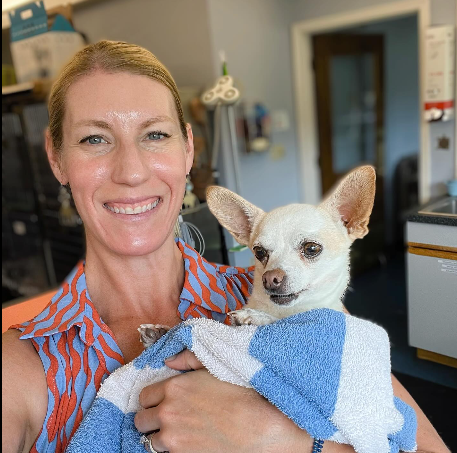Introducing defensive skills to your canine companion can be a smart move for both of your safety. However, it’s important that this training is done properly and humanely to avoid negative outcomes. With some time, patience and positive reinforcement your dog can learn skills that may one day save both of your lives.
Assess Your Dog’s Natural Instincts
The first step is evaluating whether your dog has natural protective instincts. Some popular guard dog breeds like German Shepherds, Dobermans, and Rottweilers have generations of selective breeding to hone protective behavior. Other family-friendly breeds like Labrador Retrievers and Golden Retrievers are typically less inclined toward defensive actions.
To test your dog’s natural instincts put him in low-risk scenarios that would normally elicit a protective response, such as hearing strange noises at your front door or fence line at night. Gauge his reactions – does he bark? Does his hair stand up? Does he put himself between you and the sound? If you’ve owned him his whole life this will give you a sense of any innate guarding behavior.
Socialize Extensively
No matter your dog’s breed, proper socialization is key when teaching defensive skills. Well-socialized dogs can discriminate between normal activity and true threats. Under-socialized dogs are more likely to react aggressively in non-dangerous situations. Introduce your dog safely to a wide variety of environments, people, animals and noises on a regular basis.
Work On Basic Obedience First
Rock solid obedience is the foundation of any working dog training. Only when your dog has mastered skills like sit, stay, come, down and heel is he ready to apply those skills to more complex defensive work. Additionally, obedience helps establish you as the clear leader which is essential for controlling a dog’s protective drive.
Consult A Professional
Unless you’re an experienced dog trainer, we strongly advise working with a qualified professional to develop defensive skills in your canine companion. Accidentally reinforcing aggressive responses or losing control of a protective dog can jeopardize public safety and have devastating consequences. The investment in professional training is well worth it.
Use Positive Reinforcement
While the word “defense” may evoke images of attack dogs, discomfort or punishment should never be used when training a dog. Positive reinforcement training using rewards and praise results in reliable obedience even in high stress situations. Correct defensive actions such as barking at a threatening stranger should be enthusiastically rewarded. Incorrect choices or overly aggressive reactions should be calmly redirected to the desired behavior.
Learn The Alert/Attack Differentiation
Barking, posturing and showing teeth are all good deterrents for warding off potential threats to you or your property. However, safe protection dogs should not proceed to biting or attacking without specific instruction to do so from their handler. This distinction can save you legal headaches and accidentally harming an innocent person. Reward alert behaviors and use strong “leave it” commands to prevent your dog from taking things too far.
Obedience Recall Is Crucial
Even if performing a trained protection exercise, your dog absolutely must obey situational obedience commands to disengage upon request. If you call your dog back mid-bite he should immediately release and return focus back to you. Test this diligently and do not proceed with defensive work until recall reliability is rock solid, even when distractions are high.
Bite Inhibition Is Key
While we never want our dogs to bite inappropriately, mistakes happen during training. Having a “soft mouth” bred or conditioned into your dog could save someone’s life. Bite inhibition training teaches dogs to moderate jaw pressure, avoiding full-force bites to people should the need ever arise. Talk to your trainer about the safest methods to develop this inhibition as part of your overall defensive training.
Do Not Test On Family
It may be tempting to simulate a “break in” by your spouse to test your dog’s guarding response but this can severely undermine his trust in protecting familiar people that he should not see as threats. Only conduct defense testing exercises with qualified strangers under your trainer’s supervised guidance. Testing on friends and family can erode judgment between threatening and non-threatening people.
Consider Liability
While lawful protection of owner and property are suitable jobs for some working dogs, it does come with additional legal and financial liability to consider before training. Laws vary by region but dog owners can often be held responsible for bites and property damage caused during both correct and incorrect defensive actions. Specialized liability insurance for protection dogs may be advisable.
Monitor For Stress
Dog aggression and defensive work rely heavily on prey drive and stimulation of fight or flight responses which can cause immense stress to the dog outside of training scenarios. Monitor your dog closely even months after defense training for signs of fearfulness, hypervigilance, or reactive aggression which may indicate an unhealthy level of stress. Always have disengagement and calming exercises handy to counteract the adrenaline rush.
Accept Inherent Risks
While a properly trained protection dog can deter threats, there is always risk of harm to either dog or human when applying such specialized skills outside of controlled scenarios. Recognize that once defensive behaviors are trained they are not a guarantee of safety and must be constantly managed to prevent unintended consequences. No amount of obedience can make anticipating a dog’s reaction in an unfamiliar crisis completely reliable.
Consider Non-Confrontational Deterrents
Before embarking on an intensive bite-work training regimen with your family pet, consider whether non-confrontational deterrents might meet your personal safety needs. Things like security alarm signage, cameras, motion-activated lights, fences, and securely locked doors and windows may provide adequate protection without liability or risk of harm. The most effective security plans use multiple low-risk layers.
Put In The Work
Remember that advanced skills like civil or defense training require far more physical and mental conditioning than basic manners or trick obedience. Don’t expect a casually trained house pet to perform like a working police K9 without exhaustive skill building, proofing and maintenance training to meet the needs of such intense real-world applications. This investment requires a major lifestyle commitment.
Know When To Quit
While some working line dogs thrive with protection work, others may never take to it without undue health and behavior risks. If you’ve worked closely with a trainer and your dog continues to show substantial fear, disinterest or stress when presented with threatening scenarios, it may be time to simply cease this type of training and focus on more suitable jobs for that particular dog.
Assess Legal Landscape
Local laws pertaining to specialized bite work training vary greatly depending on where you live. Some municipalities restrict residents from owning “dangerous” trained protection dogs altogether. Be very familiar with any restrictions or liability considerations imposed by local authorities to remain in compliance should your dog ever be compelled to perform his defense skills in public at any point.
The process of training a dog in protection is complex and should not be taken lightly. But by partnering with experienced professionals and committing ample time and effort, certain working line dogs have the potential to learn formidable skills to keep their owners safe. Are you willing to take on the increased responsibility and lifestyle sacrifice this type of training demands? If so, ensure you have a suitable dog and the right guidance to avoid preventable mistakes. Stay the course and you may one day have a valiant guardian by your side.

Dr. Allison Kramer is a seasoned veterinarian with a Master’s degree in Animal Behavior and over 10 years of experience specializing in canine health and behavior. Her expertise in positive reinforcement training and holistic care enhances the well-being of dogs and fosters strong pet-owner relationships. For expert advice and valuable insights, follow Dr. Kramer on Instagram @dr.allisonkramer.





